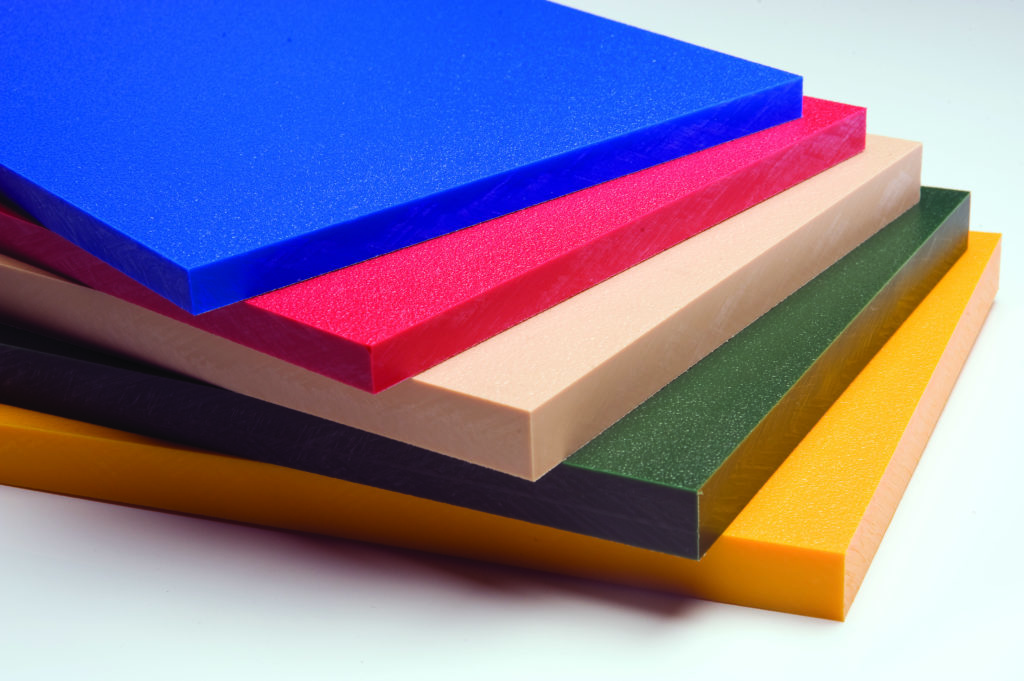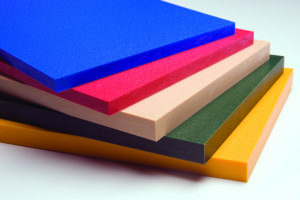If you’re in the market for high quality materials for use in containers, packaging, or industrial applications, you should know about the benefits of HDPE plastic sheets. This plastic material has some unique qualities that make it perfect for a wide array of applications, from boating components to industrial equipment.

Of course, finding the right materials for your applications starts with gaining a thorough understanding of each plastic’s qualities and benefits. For those who are interested in learning about various plastic materials and finding the best options for their specific needs, here’s a guide to HDPE plastic sheets.
What Are HDPE Plastic Sheets?
HDPE stands for High Density Polyethylene. It’s a thermoplastic polymer that is known for being strong, rigid, and dense. Made from petroleum, it’s one of the most versatile plastic materials currently available. More specifically, it is known for offering high impact strength, resistance to chemicals, and low levels of water absorption.
HDPE sheets are sold as solid, flat surfaces. However, it can also be molded into specific shapes or even used in injection molding or 3D printing. Since it’s a thermoplastic, exposure to high heat is what allows it to be easily shaped and formed.
What Are They Used For?
HDPE is a food safe material, so it’s commonly used in packaging for food and bottles for beverages. In its sheet form, it is commonly used to create cutting boards or food prep surfaces. It can also be used as storage for other liquids, like tanks for water, oil, and waste.
Since HDPE is able to hold up well against impact and friction, it’s also popular in industrial applications, like rails and guides in manufacturing facilities. It’s especially common in factories or processing centers that deal with chemicals or potentially corrosive materials, since HDPE doesn’t break down when exposed to these items. It can also be used in chemical storage and pipes that distribute liquids throughout these facilities.
HDPE is also common in marine applications due to its low water absorption and high impact resistance. More specifically, it can be used in rails, trim, and accessories for boats and docks. It holds up well against the outdoor elements and even direct contact with water.
These are just a few of the most popular industries and areas that make use of HDPE. However, it can be useful in nearly any application where strength, moisture resistance, and chemical resistance are necessary.
What Are the Benefits of HDPE Plastic Sheets?
The uses outlined above make it clear that this plastic material is incredibly versatile. But that’s not the only thing that HDPE has to offer. Though it has many different benefits, the main qualities that make it stand out for most industry applications include its strength, water and chemical resistance, and malleability. Here’s a more specific explanation of each of those top benefits.
First up is strength. HDPE has a large strength to density ratio, which basically means that it is resistant to breaking under tension. It’s well suited for holding heavy materials and large amounts of liquids without showing signs of damage or wear.
HDPE’s density also means that it isn’t prone to absorbing the materials it holds, which is what makes it so well suited as a container for liquids and for marine applications. In fact, HDPE is resistant to corrosion, mold, mildew, and rotting. This makes it incredibly durable in a wide array of environments. It is also long-lasting, weather-resistant, and virtually impervious to many basic solvents, greases, waxes, and acids. Additionally, HDPE is approved for safe use in a variety of industries and instances. More specifically, the FDA, NSF, and USDA have all approved industry-grade HDPE as a food safe material. This means that it can be used in containers or prep surfaces that come into direct contact with food and beverages, without absorbing moisture or leaching any chemicals or other materials into the contents.
Finally, HDPE is easy to mold and form into specific containers or shapes. It has a high melting point, so HDPE sheets are able to stay rigid unless they’re heated to very high temperatures. However, once the material reaches its melting point, it can be easily molded into just about any shape your operations require. In its sheet form, HDPE is also highly processable, meaning that it can be worked using a variety of fabrication methods like cutting, deep drawing, routing, welding, riveting, milling, and hot and cold forming.
If you’re looking for more information about HDPE sheets or want to use this durable and versatile material for your company’s applications, Polymershapes can help. We offer HDPE in standard and custom sizes in a variety of forms, including sheets, rods, and tubes, all from leading edge suppliers. We can also offer additional value-added services like conversion and fabrication to help these plastics meet your specific needs.
In addition, our local facilities are outfitted with state of the art equipment and conveniently located throughout the country, so you can receive personalized service and fast shipments from teams right in your own backyard. Basically, we offer the convenience and friendly service of a local operation alongside the cutting edge capabilities and leading manufacturers of a nationwide leader. In addition to HDPE, we can supply your business or organization with a variety of plastic materials, including polycarbonate, ABS, acrylic, UHMW, and PETG. To start exploring your plastic fabrication options, visit our website to contact your local Polymershapes facility today!
